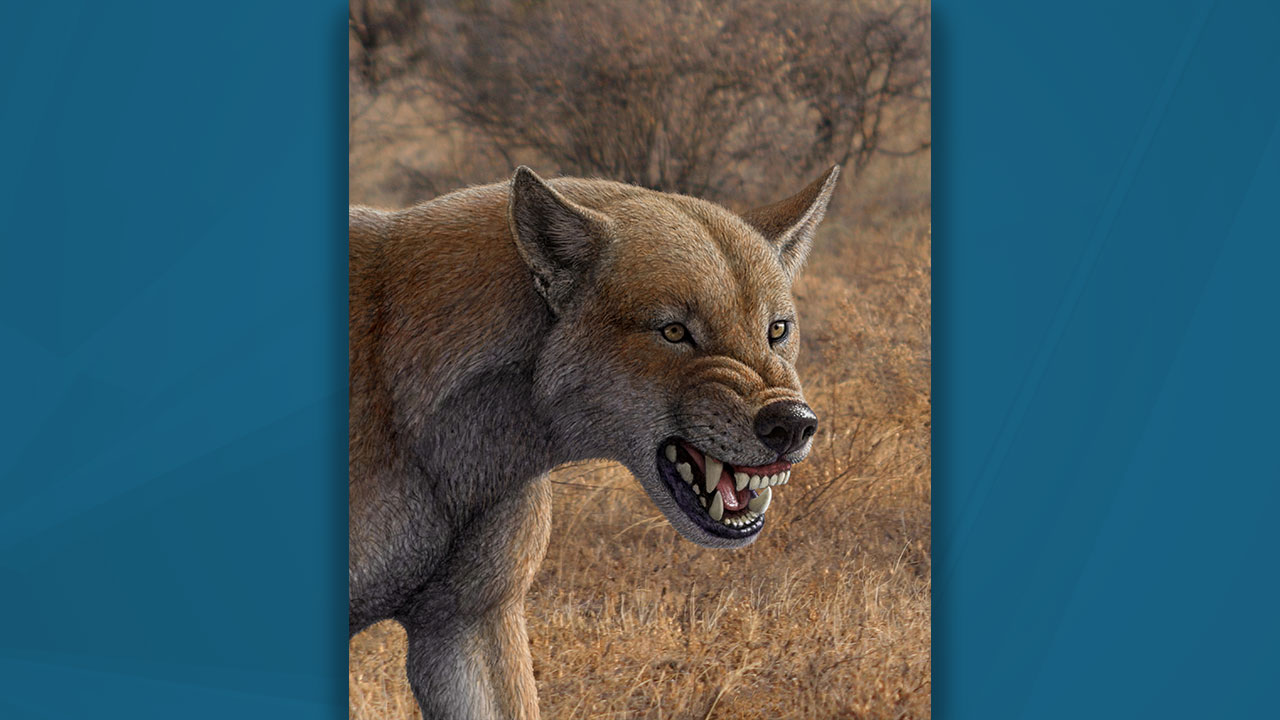- August 11, 2022
- No Comment
- 4 minutes read
‘Bone-crushing’ dog discovered at Tennessee’s Gray Fossil Site – WHNT News 19

WHNT.com
Please enter a search term.
Please enter a search term.
by: Mary Mays
Posted: Aug 9, 2022 / 08:41 AM CDT
Updated: Aug 9, 2022 / 08:41 AM CDT
by: Mary Mays
Posted: Aug 9, 2022 / 08:41 AM CDT
Updated: Aug 9, 2022 / 08:41 AM CDT
NASHVILLE, Tenn. (WKRN) — Researchers at East Tennessee State University’s Gray Fossil Site have found the first evidence of any animals in the dog family at the site. The Gray Fossil Site has produced numerous since its discovery in the last 20 years, but this latest discovery is particularly exciting.
A single right humerus (upper arm bone) of a Borophagus, or “bone-crushing” dog was identified at the site, and research on it was carried out by Emily Bōgner, a doctoral student at the University of California, Berkeley, and Dr. Joshua Samuels, associate professor in the ETSU Department of Geosciences and curator at the Gray Fossil Site and Museum.
David Moscato, the Science Communication Specialist at the Gray Fossil Site, says that the fossil is unique in more ways than one. “What’s so cool about our Borophagus, or our bone-crushing dog, is that it is a new type of large predator that we haven’t found before at the Gray Fossil Site. And it’s the first time we’ve identified any members of the dog family at Gray.”
The extinct Borophagus was estimated to weigh between 115 and 160 pounds. “They would have been about the size of full-grown wolves today. And they wouldn’t have acted quite like wolves. This research compares the anatomy of the arm bone in this dog to wolves today and finds that whereas modern wolves have limbs that are structured for running for chasing down prey, this bone-crushing dog was probably more of an ambusher,” says Moscato.
Moscato says that the Borophagus would have eaten prey in a similar way to hyenas, ” This group of dogs, known from other fossils sites, is famous for their powerful skulls and jaws and teeth. And the paleontologists suspect that they were probably using those jaws and teeth similarly to hyenas today. And hyenas are specialists at cracking bone to get to the nutrition inside. These dogs were probably doing something similar.”
There are also reasons why this find is so unique, “Most of the time Borophagus dogs like this are found in ancient grasslands and open habitats. The Gray Fossil Site is an ancient forest. So even though these kinds of dogs have been found in other fossil sites, ours is already an oddball for living in an ecosystem that we normally don’t find these dogs.”
Other predators, such as alligators and saber tooth cats, have been found at the Gray Fossil Site, but the majority of finds have been of herbivores. However, much of the site remains unexplored, and Moscato hopes that more Borophagus specimens will be found.
document.getElementById( “ak_js_1” ).setAttribute( “value”, ( new Date() ).getTime() );
Copyright 2022 Nexstar Media Inc. All rights reserved. This material may not be published, broadcast, rewritten, or redistributed.
Thanks for signing up!
Watch for us in your inbox.
Subscribe Now
Thanks for signing up!
Watch for us in your inbox.
Subscribe Now

